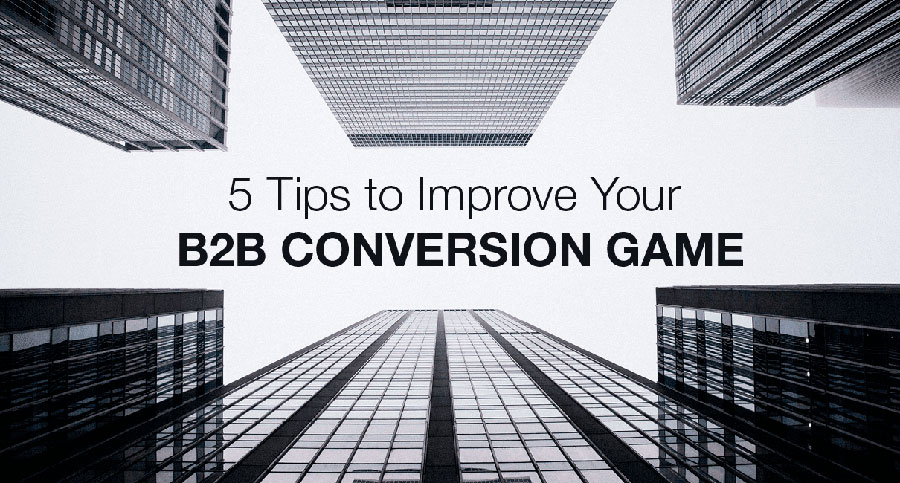
Business-to-business can be a very tough space.
You’re selling large ticket items and high-consideration products and services, so the sales process tends to be complex and long.
In an episode of Landing Page Optimization, Tim Ash picked TopSpot Internet Marketing VP of Operations Anita Perez’s brain for ways to get companies to do business with you.
They covered five points.
1. Tailor for specific industries
People care about comparables in their own vertical industry. They look for a specific certification or material type that is unique to the application that they need the product or service for.
If your products or services work across different industries, present them on your web site by vertical industry. Pull out the subsets or the specific conditions of an industry and describe the product in a language that the visitor will feel at home to.
Anita, who works with a B2B online agency that specializes in industrial web marketing, says that technical information needs to be laid out.
For marine applications, for example, a customer would want to know if the product is corrosion-resistant, and the temperature the product can withstand. If you’re a custom manufacturer, you can’t put everything you do on a page, so offer a range of services and include key factors that make sense for someone who’s going to use the product in a harsh environment. Use charts and include technical information ranges.
Instead of just pointing out that you service a particular industry, show potential customers that you understand their requirements by indicating that you have comparable clients in the same industry, have appropriate certifications, and are knowledgeable of specific environments.
2. Think about the gate keepers
In the B2B space, you have the technical buyer who’ll want all the specifications met, the person who’s new to the company tasked to do the sourcing but really doesn’t know what the company needs, and the purchasing manager who might be concerned about getting the 60-day terms.
Your task is to make each of these roles feel welcome. You can’t just overload them with technical information because that will only serve the technical person.
The key is to present your expertise but at the same time make the page friendly enough by giving your visitors means to contact your experts who can help through the process.
3. Have micro-conversions throughout the research phase
According to Anita, it’s important to offer something that is going to get visitors to come back to your site throughout the different stages of the buying cycle – have videos or PDFs that contain your contact information.
Tim agrees that for a long-term sale, you need a content marketing strategy – specifically, content that supports every stage in the buying cycle.
It’s crucial that you have a call-to-action in each downloadable asset. At the very end of an eBook, for instance, have a direct link back to your page so prospects can order or get a quote.
There are distributors who make the mistake of using the manufacturer’s PDF which has the manufacturer’s contact information. So if the PDF download is the most consistent action taken on the site, distributors will have no way of knowing what those users are doing. Anita suggests moving the PDF and making it less prominent, or adding a form, or making the phone number more prominent.
Tim notes that in the worst case scenario, even if you can’t replicate your manufacturer’s spec sheet, you should bookend it and create a PDF with your own title page and your contact page and direct links at the very end.
4. Gate or give away information based on the stage in the buying cycle
Anita says she prefers to give content away freely to make things easy for the user. She suggests taking the information out of the PDF if possible and turning it into actual content on the page. However, her company does competitive analysis to see what the user’s going to experience across multiple sites.
If you put your pricing on your web site, while competitors try to get visitors to call for a quote, that can be your competitive advantage. If you give valuable information and get the customer’s e-mail address in return, you can start communicating with the customers while everybody else is trying to hard sell them into calling for a quote.
Tim sums this up by saying that early in the process, give away a lot of information. In the middle of the consideration cycle, you can ask for the most information. Then, at the end of the buying cycle, get out of the customer’s way and do not gate things to make it easy for them to act.
There are also products that can take information out of your technical database and on the fly create dynamic PDFs with it. So it’s possible for you to create your own custom spec sheets.
Another advantage of doing this is you can encode all of the information from the user’s session, so you know exactly where they came and what their browser environment is. And if and when a user follows a link out of the PDF back to some later action, you know how much time elapsed and who it was because you’ve time stamped them and have all of their information. So each of the outbound links in your PDFs is also dynamic .
5. Leverage call analytics by listening to the calls
In B2B, your zero moment of truth is when the customer is ready to talk to you – they’ve gathered enough information and they pick up the phone.
Anita points out that marketers tend to be concerned with tracking paid search and organic traffic, when they should focus on actually listening to the calls.
By listening to calls, you’ll find areas that you can use for training or process improvement. For one particular client, for example, Anita noticed that when operator options were removed and the automated system picked up, callers hung up.
Anita stresses that the true value of using a call analytics solution is listening to the post-conversion behavior and understanding what’s happening in the business.
Tim agrees that calls can even be segmented by length. Listening to short calls does not take a lot of time – you can listen to a few dozen of them, and you’ll see the larger patterns emerging of what’s going on. You can also listen to the calls that resulted in successes and see what those have in common. Then, you can model and replicate the successful behavior.
Putting It All Together
The stakes are higher in B2B, so convincing a company that you’re the perfect match naturally takes a lot.
Get potential customers to convert by showing them that you understand their requirements, engaging the company’s gate keepers, keeping in touch throughout the research phase, gating and giving away information appropriately, and monitoring calls during the zero moment of truth to understand what works and what doesn’t.

